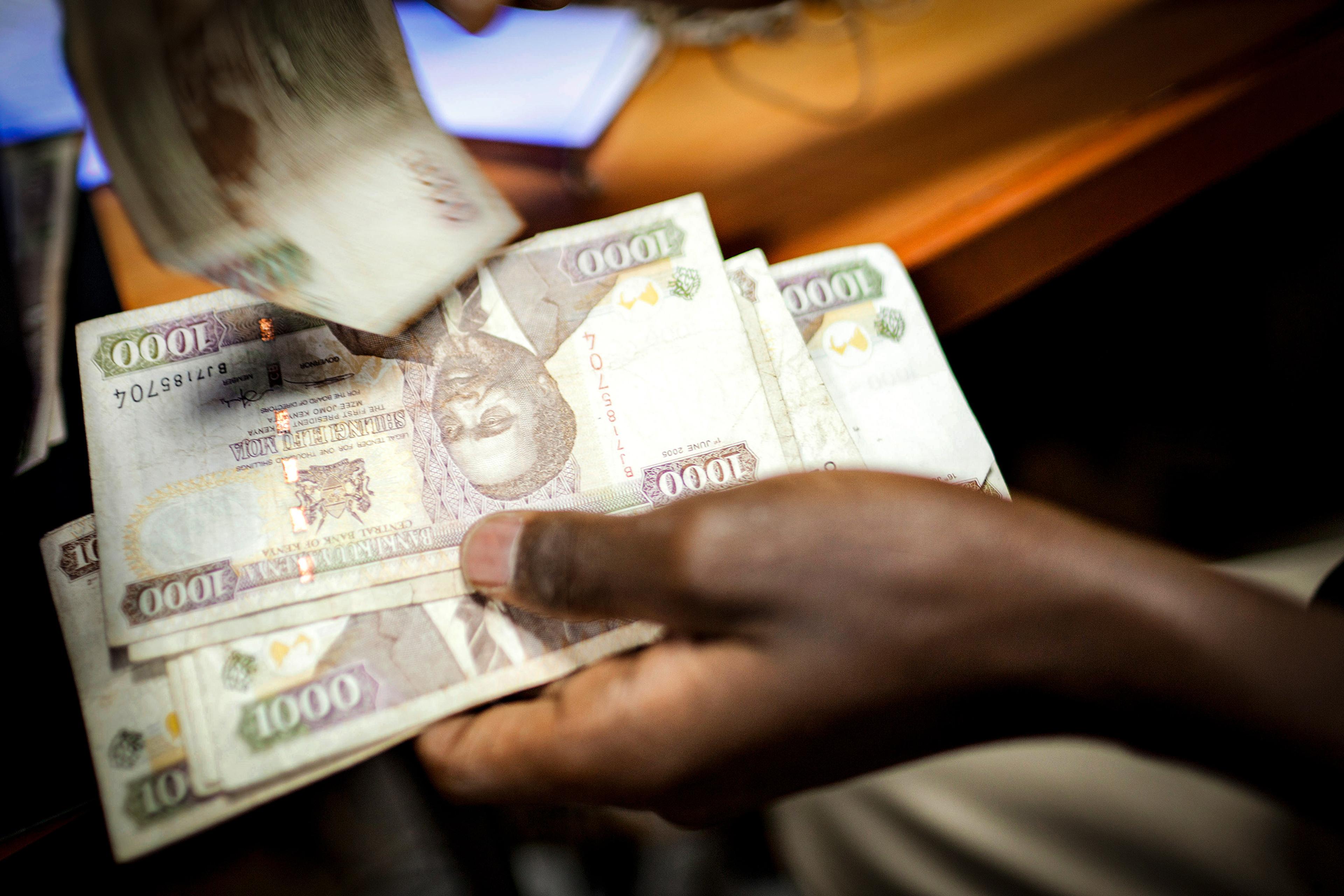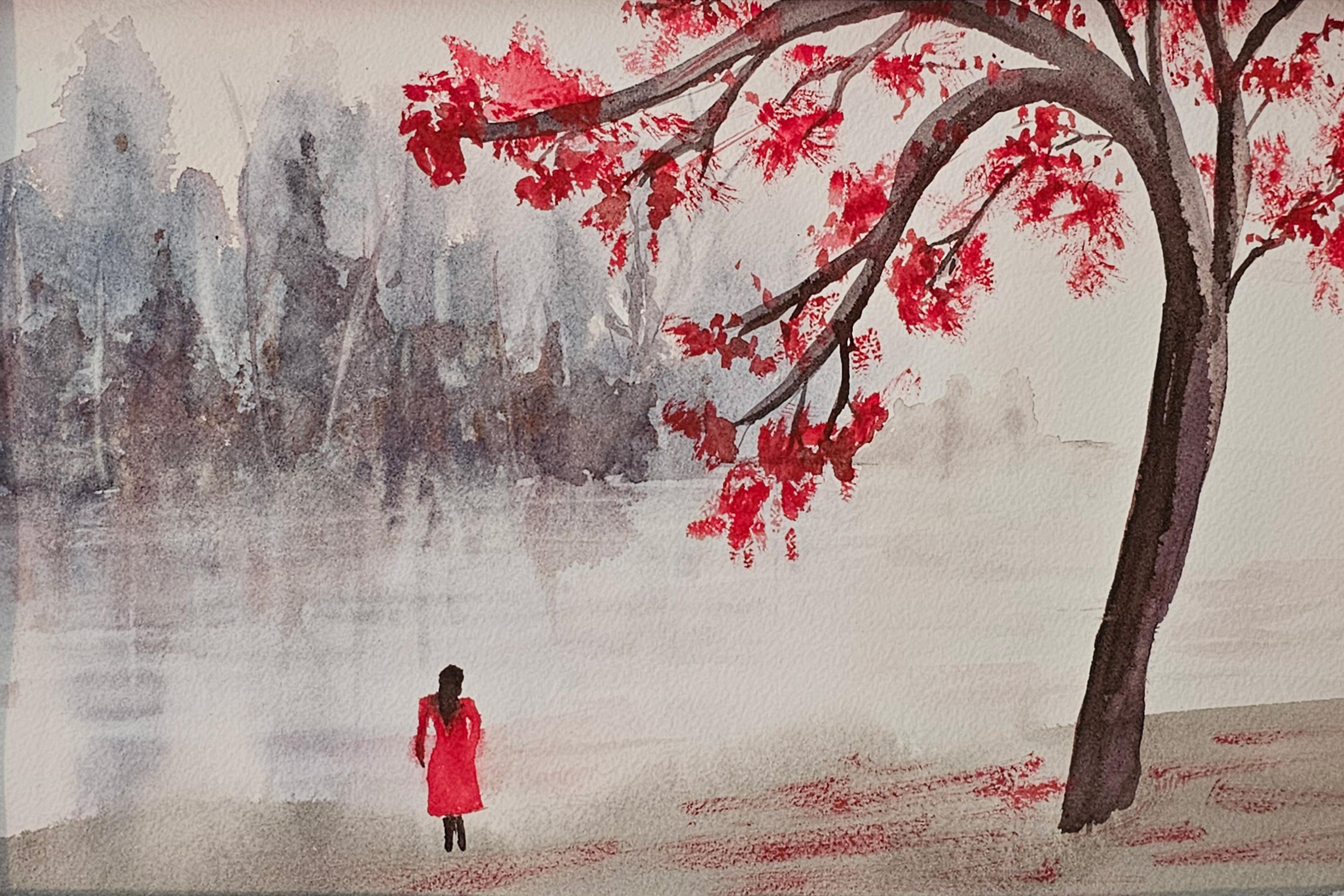Whenever I’m doubting myself, my friend Paris always knows what to say. ‘Nobody can be you better than you,’ he points out one day when I’m feeling especially low. Then he cracks a well-timed joke, and the heaviness between us, palpable over the phone, isn’t so heavy anymore. Even though we’re more than 2,700 miles apart, I can feel his love. I only wish we could talk more often. But it’s complicated.
When my taxi pulls up to the maximum-security prison in Napanoch, New York – a stone building ringed with chain-link fencing three times my height and topped with barbed wire – I join a small group waiting for visitation hours. Cameras affixed to metal poles look down on us. A mother with her infant. An elderly couple. Two women huddled close together. And me. Visitors are not permitted to speak to inmates from parking area, a sign reads. Behind the prison, the Shawangunk Mountains loom.
A minute past the hour, the iron gate still hasn’t opened. We start glancing around to see who’s going to complain first. But then the entrance buzzes, the locks clank open, and we file into a line, honouring the order of arrival. In the lobby, I empty my pockets and lock my belongings into a small locker that costs a quarter. In the waiting room, I fill out a paper slip with the name and identification number of the person I’m visiting. Eric Paris Whitfield, I scribble, my writing partner and now friend whom I connected with through a prison writing programme. After exchanging emails for more than a year, this will be our first time meeting in person – and my first time inside a state prison.
I
’m not new or naive to the criminal justice system, however. After college, I worked at a tiny newspaper in rural Kansas and, when the senior reporter left abruptly, his responsibilities fell to the three remaining staffers. The crime-and-courts beat became mine, which included covering a month-long quadruple homicide trial.
There was still snow on the ground when that trial started in March 2016. I’d walk the alley between the newsroom and the courthouse, careful not to let my thrift-store heels catch the slick cobblestones, and settle at the back of the courtroom. The front rows were reserved for the victims’ families. The fluorescent lights kept flickering; the air smelled like cigarettes. The judge’s gavel signalled the start of every session, just like in the movies.
I’d never wanted to be a crime reporter. I studied journalism to write upbeat stories: about the school mascot, the ultrarunner healing after a traumatic brain injury, the founder of a women’s wilderness organisation. Crime reporting was too serious and sad, and I didn’t want to get caught up in its messiness. Day after day during the trial, we viewed slides of evidence, listened to hours of testimony. Weeks into the proceedings, I realised the defendant wore a bulletproof vest under his dress shirt. I tried not to make eye contact when he entered or left the room in shackles. I watched the back of his head instead.
I didn’t know whether to feel sorry or horrified. Sorry that he was a product of rape and had grown up in an abusive home. Sorry that he didn’t get the help he needed. Horrified that he was accused of killing four people, including a toddler. Horrified that such violence could exist. I didn’t know how to reconcile these contradictions, so I kept them to myself. My job was to report on the facts, not feelings – certainly not my feelings. I was 22 years old, living alone for the first time, and would recap the trial to my long-distance boyfriend every night. I took a ceramics class on Thursday nights to have something to look forward to.
Court documents and mugshots have a way of stripping people of their humanity
At my next job as a breaking news reporter in Colorado, I compiled daily crime blotters. I listened closely to the police scanner. I rushed off to car accidents and other emergency calls. I sat in at proceedings at the county jail court and courthouse, reporting on stabbings, arsons, sexual assaults, aggravated assaults, domestic assaults, child exploitation, robberies, fatal car crashes, unattended deaths, murders.
Defendants rarely picked up my phone calls or answered my knocks at their doors, and their public defenders seldom provided comments when I chased them down after hearings. Journalists typically talk to sources before writing a story, but crime reporters often publish articles using just court documents. As is common practice at newspapers, we published mugshots of defendants before they were convicted and divulged private details about their lives without context. But court documents and mugshots have a way of stripping people of their humanity. Gradually, as I ignored any flickers of tenderness or sorrow, I felt my own humanity slipping away too. I filed my stories, Tweeted a link, and went home. I shared the juiciest details of cases as gossip at parties. I reminded myself this was only a job.
In 2017, a man called my desk phone from jail. He’d been arrested alongside 20 others as part of a SWAT team drug-busting operation and wanted to express his innocence in person. With a shatterproof window between us, he told me his side of the story while I took notes for mine. ‘I feel I’m getting absolutely torn down before I even enter the courtroom,’ he said. His neck tattoos wrinkled whenever he turned his head.
This was my first time meeting someone face to face in jail, one on one. When our visit was over, I pushed a button to alert the guards I was ready to leave. They didn’t respond. I pressed the button again and jiggled the door handle. How long would I have to stay in there until they noticed me?
‘Now you know how I feel,’ he said.
After three years on the crime beat, I got out in 2018. But my sense of safety had been rattled. I kept seeing the face of a young man I’d written about, who overdosed and drowned. I’d visit the Department of Corrections website often to look up the defendant in the quadruple homicide, who’d been sentenced to death row. His record – updated photo, location, disciplinary reports – was proof of life.
Two years later, after the murder of George Floyd reignited the Black Lives Matter movement against police brutality and racial oppression, I finally found words for that queasiness I’d felt sitting in courtrooms. Too many people are either wrongly convicted or wrongly sentenced – or both – and, once caged, are forgotten. As abolitionists called for systematic reform, I felt a pull to return to criminal justice work but in a way that was less harmful than crime reporting.
Paris and I first exchanged emails in December 2022, as part of a prison writing programme. All I knew about him was from his bio: Afro-native West Indian, genderqueer, sentenced to 25 years to life, unjustly incarcerated under the felony murder law (which allows anyone accused of a violent felony to be charged with murder, even if they didn’t directly cause the death or intend for it to happen), co-founder of the Prisoners’ Brain Trust. ‘There is transformative power in building community where ideas/different voices are shared,’ he wrote in his application to join the writing programme. Already, I could tell we’d learn from each other.
At the prison in Napanoch, I’m buzzed through a set of metal doors to a room of tables. I lower myself into a chair, but a guard yells at me: I must check in with him first. Embarrassed, I hand him my paperwork. Then I spot Paris: broad-shouldered, neatly trimmed hair, bright-green sneakers. Not just a voice over the phone. Not just a sign-off in an email. He stands up from the table so we can hug.
Paris is expecting me. We have four hours together. We learn that we are both Cancer signs with summer birthdays. He tells me about his siblings and about growing up in Harlem. I tell him about my husband and dog. We laugh and cry and sit in silence, and share a bag of honey barbecue Fritos.
We pose in front of a mural of a beach, arms around each other, smiling, as the volunteer snaps three photos
Around us, I recognise the mother with her infant, the elderly couple, and the two women from outside, all at tables of their own with their incarcerated loved ones – people who had lives outside of this place and have created new ones while living here.
‘Do you guys want your picture taken?’ a man asks us. I noticed him chatting at other tables.
‘It’s a Polaroid for us to keep,’ Paris explains. The man is also incarcerated and volunteers in the visitation room. They exchange a few jokes, their laughter reverberating in the cinder-block space.
‘I would love that,’ I say. We pose in front of a mural of a beach, arms around each other, smiling, as the volunteer snaps three flash photos. I keep two and leave the third with Paris.
At home in Oregon, I pin the Polaroid to my postcard-filled fridge with a magnet. I’m sitting at my desk, steam billowing from my mug of tea, my dog’s nails tapping on the hardwood floor, when I hear my phone ring. It’s Paris. I added the prison’s number to my contacts and marked it as one of my favourites, so that his calls can bypass the Do Not Disturb mode. Only he can call me; I can’t call him back.
‘You’ll be happy to know I got my CV and my apology letter out of the way,’ Paris says. He’s crafting a pages-long letter for his parole hearing in 2026 that gives the board a glimpse of his transformation, from his childhood to his current self, taking responsibility for his past. ‘Get your big sunglasses because I don’t know what your ugly cry looks like.’ Laughs tumble out of us. It’s easy to laugh with Paris.
It has taken us time to build trust, but we can let our guard down now
Then it’s my turn to apologise: I owe him edits on an essay about wearing green sneakers to commemorate a friend who died by suicide. I don’t know where we’ll pitch it yet, but I know it’ll find a home. Paris recently published a report about the architecture of incarceration and the similarities between public housing and prisons. He wrote:
What was forfeited when I first stepped foot inside of a prison cell, New York public housing had already begun to strip me of: opportunities for success and self-determination. Most of the signage in my neighbourhood pointed to my future behaviour or future demise: ‘Crack Is Wack,’ ‘Call Crime Stoppers,’ and along bodega walls, ‘RIP Tommy, Juan, Maria,’ the list of names goes on … Like prisons, [New York’s] housing projects are containing poverty, not solving it, and hiding away mental illness, not offering access to mental health services.
Staying in touch with Paris means I cannot ignore or forget about what’s happening behind the prison’s walls, even if I’m not witnessing it myself. It has taken us time to build trust, but we can let our guard down now. Sometimes, he shares about the hardships and horrors of prison. Goodbyes to friends. Officers on strike. But we always circle back to the ways in which we relate: writing aspirations, family struggles, political grievances, podcasts we enjoyed.
Not long ago, I asked Paris to send me a list of things he wants to do once he is free. I’m keeping it in a Google folder with his drafts and published clips, so he’ll have it when he gets out. He emailed me 10 things to start, such as ‘Get a driver’s licence’ and ‘Sit on the beach w/music and a book just as the sun sets.’ One day soon, we’ll have more than four hours in a visitation room or 30-minute increments over the phone.
Another one: ‘Go to a concert (hopefully not by myself :-)).’ I think that means I’m invited.








